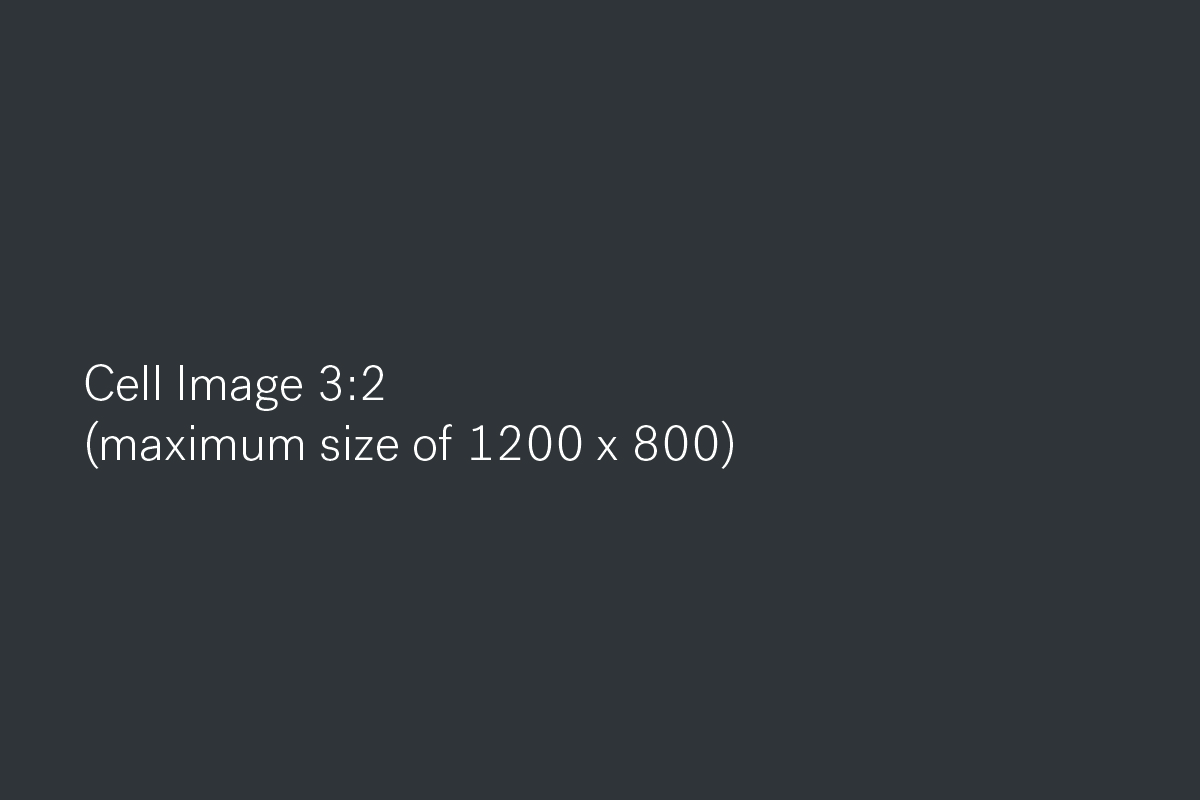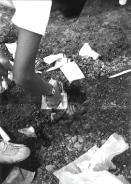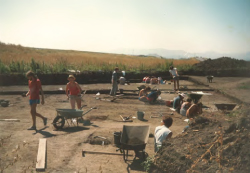Body copy is contained within an article tag that with a class called ".width-570". Character count should roughly be around 75 characters across. Nullam quis risus eget urna mollis ornare vel eu leo. Cum sociis natoque penatibus et magnis dis parturient montes, nascetur ridiculus mus. Nullam id dolor id nibh ultricies vehicula. Cum sociis natoque penatibus et magnis dis parturient montes, nascetur ridiculus mus. Nullam id dolor id nibh ultricies vehicula
Mia Style Guide Documentation
The (Lost) Grid
.row.two-thirds
.col-9
.col-3
.row.two-thirds (with switch)
.col-9 .switch
.col-3 .switch
.row.thirds
.col-3
.col-3
.col-3
.row.fourths
.col-4
.col-4
.col-4
.col-4
.row.thirds (with switch)
.col-3 .switch-forward (on mobile)
.col-3 .switch-third
.col-3
.row.sixths
.col-2
.col-2
.col-2
.col-2
.col-2
.col-2
.row.two-thirds (with nesting)
.col-3
.col-6
.col-6
.col-6
.col-6
.col-6
Colors
Main
Secondary (From Current Site)
Secondary (From Branding)
Typography & Word Counts
Font Stacks
"Mia Light", "Helvetica Neue", Helvetica, san-serif
"Mia Regular", "Helvetica Neue", Helvetica, san-serif
"Mia Bold", "Helvetica Neue", Helvetica, san-serif
"Mia Black", "Helvetica Neue", Helvetica, san-serif
Headings
Heading 1
Heading 2
Heading 3
Heading 4
Headings with Alt Text
Page Header: With Span
Heading 2 Large Alt
Block Header: With Span
Text Elements
Hero Body text
Body Post Date
Body text
This line of text is meant to be treated as fine print with a small tag
The following snippet of text is rendered as bold text.
The following snippet of text is rendered as italicized text.
This is a blockquote
Example of hr tag line aka horizontal line:
Strikethrough text
An abbreviation of the word attribute is attr.
Left aligned text.
Center aligned text.
Right aligned text.
Justified text.
Headlines
The headlines used in the featured blocks should match. If using one line, the maximum character length is approximately 30, and for two lines is approximately 60.
Text Blocks
The text blocks under the featured images should match. If using two lines, the maximum character count is approximately 120. If using three lines, the maximum character count is approximately 165.
Lists
Unordered
- Lorem ipsum dolor sit amet
- Consectetur adipiscing elit
- Integer molestie lorem at massa
- Facilisis in pretium nisl aliquet
- Nulla volutpat aliquam velit
- Phasellus iaculis neque
- Purus sodales ultricies
- Vestibulum laoreet porttitor sem
- Ac tristique libero volutpat at
- Faucibus porta lacus fringilla vel
- Aenean sit amet erat nunc
- Eget porttitor lorem
Ordered
- Lorem ipsum dolor sit amet
- Consectetur adipiscing elit
- Integer molestie lorem at massa
- Facilisis in pretium nisl aliquet
- Nulla volutpat aliquam velit
- Faucibus porta lacus fringilla vel
- Aenean sit amet erat nunc
- Eget porttitor lorem
Inline
- Lorem ipsum
- Phasellus iaculis
- Nulla volutpat
Links
Buttons
Forms
Generic forms
Search
Fancy Search
Filter Checkboxes
Layout Components
Header (with Hover and click options)
Hero (image swapped with bkgd image)

Hero Text: With Sub Text
Date 1-Date 2
Hero body text informative description goes here. This will need a character count.
Stay Informed. Sign up to receive bimonthly emails from Mia.
Block content cells

Lorem ipsum dolor sit amet, consectetur adipiscing elit.
Fusce imperdiet euismod lacinia. Curabitur at porttitor eros. Lorem ipsum dolor sit amet, consectetur adipiscing elit.
Lorem ipsum dolor sit amet, consectetur adipiscing elit.

Fusce imperdiet euismod lacinia. Curabitur at porttitor eros. Lorem ipsum dolor sit amet, consectetur adipiscing elit.
Read More LinkLorem ipsum dolor sit amet, consectetur adipiscing elit.

Article Title
Fusce imperdiet euismod lacinia. Curabitur at porttitor eros. Lorem ipsum dolor sit amet, consectetur adipiscing elit.
Read More LinkPlan Your Visit
General admission is free: all day, every day. Learn more about dining, shopping, and exploring the museum
The museum is open from 10AM to 9PM today.
Plan Your Visit NowUpcoming Events
An Evening with Deanna Thompson: Martin Luther and the Ambiguity of Reform
Thursday, December 1 at 5:30 pm
An Evening with Deanna Thompson: Martin Luther and the Ambiguity of Reform
Thursday, December 1 at 5:30 pm
An Evening with Deanna Thompson: Martin Luther and the Ambiguity of Reform
Thursday, December 1 at 5:30 pm
An Evening with Deanna Thompson: Martin Luther and the Ambiguity of Reform
Thursday, December 1 at 5:30 pm
Read More LinkTrending Now
Fresh perspectives from Mia’s blog on art, life, and current events.

China bans ivory sales. Here, 9 fascinating stories ivory in Mia’s collection

China bans ivory sales. Here, 9 fascinating stories ivory in Mia’s collection
Image grid with class .image-grid on each col-3
L2 Page Example

L2 Page: With Sub Text
Informational Content goes here from L2 Page's Content Data
Questions? Call 612 870 3000 or email us.
Plan Your Visit
General admission is free: all day, every day. Learn more about dining, shopping, and exploring the museum
The museum is open from 10AM to 9PM today.
Plan Your Visit NowLorem ipsum dolor sit amet, consectetur adipiscing elit.

Fusce imperdiet euismod lacinia. Curabitur at porttitor eros. Lorem ipsum dolor sit amet, consectetur adipiscing elit.
Read More LinkLorem ipsum dolor sit amet, consectetur adipiscing elit.

Fusce imperdiet euismod lacinia. Curabitur at porttitor eros. Lorem ipsum dolor sit amet, consectetur adipiscing elit.
Read More LinkLorem ipsum dolor sit amet, consectetur adipiscing elit.

Fusce imperdiet euismod lacinia. Curabitur at porttitor eros. Lorem ipsum dolor sit amet, consectetur adipiscing elit.
Read More LinkLorem ipsum dolor sit amet, consectetur adipiscing elit.

Fusce imperdiet euismod lacinia. Curabitur at porttitor eros. Lorem ipsum dolor sit amet, consectetur adipiscing elit.
Read More LinkL3 Page With Featured Image
Search Art Stories
What are you looking for?

L3 Page (With Featured Image and Cells): With Sub Text
P tags within Article tags have a width of 35.625rem (570px) for the sake of readability. On the first day of my first dig, in central France, I uncovered a dead man’s foot. It was the 1980s, the first of four seasons I spent digging a Late Iron Age/Early Roman site in the Auvergne during the hot summer months. The man had likely died in the first century CE and was probably a Roman, though the site also showed signs of continuous occupation by Gallic tribes from the 3rd century CE. The foot was all I ever recovered of him—the rest of his skeleton was buried in my neighbor’s square-meter pit. But I was glad to find it. It was an exhilarating way to start my archaeology career.
I thought of this early reckoning with the past while assembling “Material Girls: Living in the First Material World,” an exhibition of several prehistoric female figurines in Mia’s Cargill Gallery (January 15 to April 16, 2017). The discipline of archaeology taught me how to think critically about evidence, interpretation, and bias when viewing the past. We construct what we know about earlier periods by analyzing material culture (the stuff we leave behind); the written record, if there is one; skeletons and cadavers; the environment; oral history; and cultural anthropology. In trying to understand the evidence uncovered during a dig, archaeologists employ a combination of these tools to develop hypotheses that attempt to reconstruct life in the remote past. Ultimately, however, scholars’ theories often have more to do with their contemporary point of view and biases than any past reality.
Prehistory is the most difficult period to reconstruct. Nothing was written down, so conjuring the beliefs and motives of prehistoric people requires a lot of conjecture. When archaeologists in the 1800s began to discover ancient carved figurines of fleshy naked women, of the sort assembled in “Material Girls,” they referred to them as “Venus Figures.” They assumed that the sculptures, with their exaggerated breasts and genitalia, must have been all about sex—the “pin-up girls” of the ancient world. Of course, the name “Venus” was intended to be both erotic—Venus was the Greco-Roman goddess of love—and ironic, since the obese figures don’t conform to most contemporary ideas of the svelte and shapely classical Venus.
Article Example with 960px width container

Author
Kaywin Feldman
Nivin and Duncan MacMillan
Director and President,
Minneapolis Institute of Art
L3 Article Text: With Article Sub Text
P tags within Article tags have a width of 35.625rem (570px) for the sake of readability. On the first day of my first dig, in central France, I uncovered a dead man’s foot. It was the 1980s, the first of four seasons I spent digging a Late Iron Age/Early Roman site in the Auvergne during the hot summer months. The man had likely died in the first century CE and was probably a Roman, though the site also showed signs of continuous occupation by Gallic tribes from the 3rd century CE. The foot was all I ever recovered of him—the rest of his skeleton was buried in my neighbor’s square-meter pit. But I was glad to find it. It was an exhilarating way to start my archaeology career.

Feldman uncovering an ancient man’s foot at a dig in France.
I thought of this early reckoning with the past while assembling “Material Girls: Living in the First Material World,” an exhibition of several prehistoric female figurines in Mia’s Cargill Gallery (January 15 to April 16, 2017). The discipline of archaeology taught me how to think critically about evidence, interpretation, and bias when viewing the past. We construct what we know about earlier periods by analyzing material culture (the stuff we leave behind); the written record, if there is one; skeletons and cadavers; the environment; oral history; and cultural anthropology. In trying to understand the evidence uncovered during a dig, archaeologists employ a combination of these tools to develop hypotheses that attempt to reconstruct life in the remote past. Ultimately, however, scholars’ theories often have more to do with their contemporary point of view and biases than any past reality.

The site in France where Feldman began her archaeological career.
Prehistory is the most difficult period to reconstruct. Nothing was written down, so conjuring the beliefs and motives of prehistoric people requires a lot of conjecture. When archaeologists in the 1800s began to discover ancient carved figurines of fleshy naked women, of the sort assembled in “Material Girls,” they referred to them as “Venus Figures.” They assumed that the sculptures, with their exaggerated breasts and genitalia, must have been all about sex—the “pin-up girls” of the ancient world. Of course, the name “Venus” was intended to be both erotic—Venus was the Greco-Roman goddess of love—and ironic, since the obese figures don’t conform to most contemporary ideas of the svelte and shapely classical Venus.

Archaeologists have since found naked female figurines from prehistoric cultures across the globe. They were created by societies that were both geographically and chronologically disparate, that had no contact with each other. The greatest thing they all have in common is mystery: We don’t actually know why they were made, what they were used for, or who used them. We are now more likely to admit this, to acknowledge that our theories are just that—we don’t have enough evidence to be certain. If the bias of early archaeologists led them to see the figures as sexual objects, we now believe they may have been goddess figures, gifts to the gods, representations of prized ancestors, or even dolls.
Truth be told, I am attracted to archaeology in large part because of the opacity of the past. When I first went to university, I studied political science. But I took an ancient Greek archaeology class for fun and got goose bumps when I saw a photo of the mysterious “Horns of Consecration” from Knossos, the symbol of the sacred bull. I soon switched my major to classical archaeology. I was tired of being told there was a right or wrong/true or false/multiple-choice answer to every question. I am more interested in mystery, in the grey area between black and white, than certainty. I don’t uncover physical skeletons anymore. But a good burial still makes the hair on the back of my neck stand up.
